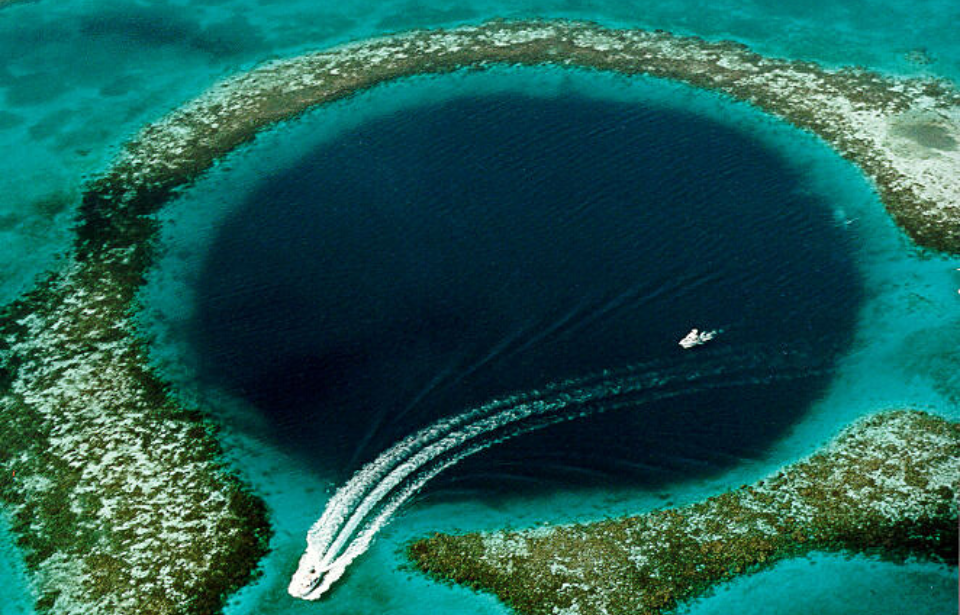Part of the Belize Barrier Reef Reserve System – a UNESCO World Heritage Site – is the world’s largest sea hole. Called the Great Blue Hole, this massive sinkhole measures 1,043 feet across and 407 feet deep and forms a near-perfect circle. Visible from space, the darkness of the deep sinkhole is surrounded by bright, light turquoise water. The Great Blue Hole lies in the middle of the Lighthouse Reef atoll, with islands of coral encircling the entrance to the hole.
Jacques Cousteau made the Great Blue Hole popular
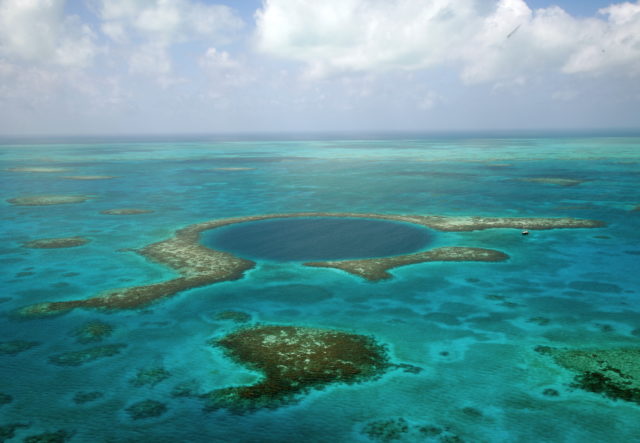
French oceanographer Jacques Cousteau made the Great Blue Hole famous when he visited the landmark in 1971. Cousteau and his crew sailed aboard the Calypso when they explored the caverns. They were able to confirm that the hole was once an aboveground series of caves that were flooded as a result of the rising ocean levels. Cousteau dubbed it one of the top five scuba diving sites in the world, immediately piquing the interest of diving enthusiasts around the world.
Although he was the one to make it famous, Cousteau was not the one to first discover the hole. No one really knows who first discovered it. It’s been known to fishermen in the area for decades, possibly centuries, and some even believe that the ancient Maya lived close to the landmark thousands of years ago.
Even Charles Darwin saw the Great Blue Hole, calling its surrounding landscape “the most remarkable reef in the West Indies.”
The cavern was caused by rising ocean levels
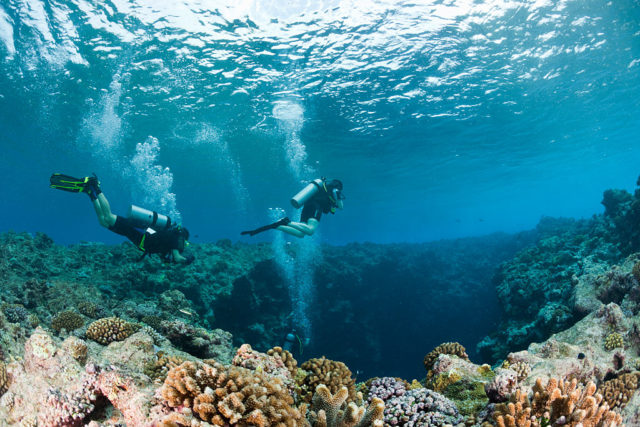
Before Cousteau was able to confirm, it was hypothesized that the caverns of the Great Blue Hole were once aboveground. It is believed that they were submerged underwater as a result of the end of the last Ice Age approximately 15,000 years ago. The caves themselves are believed to have been formed as early as 153,000 years ago.
It’s most likely that the sinkhole was formed from a karst limestone cave. The weight of the water that flooded the area caused it to collapse and create a “vertical cave.” While the sinkhole appears a dark navy blue color from the ocean’s surface, the surrounding area consists of turquoise blue waters and colorful coral reefs. These reefs stretch about 18 feet down until they meet the opening of the hole itself.
Stalagmites and stalactites are found in the cavern
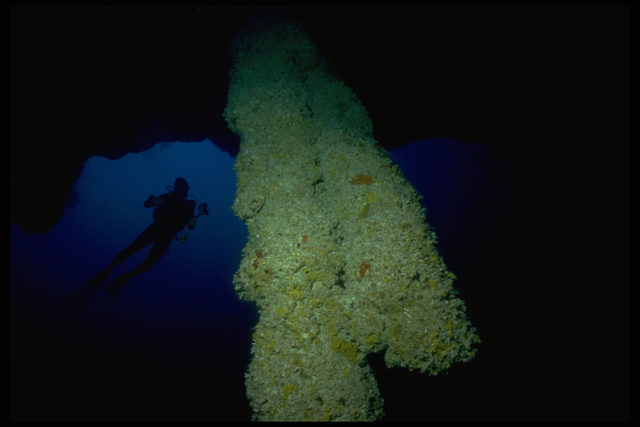
In the deepest parts of the Great Blue Hole, several incredible stalagmites and stalactites can be seen emerging from the limestone walls of the caverns. The structures are mineral deposits that form the shape of icicles reaching up from the ground (stalagmites) or dripping down from the ceiling (stalactites). These helped to confirm the theory that the caves were at one point aboveground as they could not have formed if they’d always been submerged underwater.
Some of these remarkable structures, located near the bottom of the hole, can reach lengths of nine to 12 feet. At a certain depth, the water becomes anoxic, meaning the composition of the water is completely void of oxygen. This allows for only minimal life forms to exist here, making the stalagmites and stalactites one of the highlights of a dive here.
An expedition rendered the first-ever 3D mapping
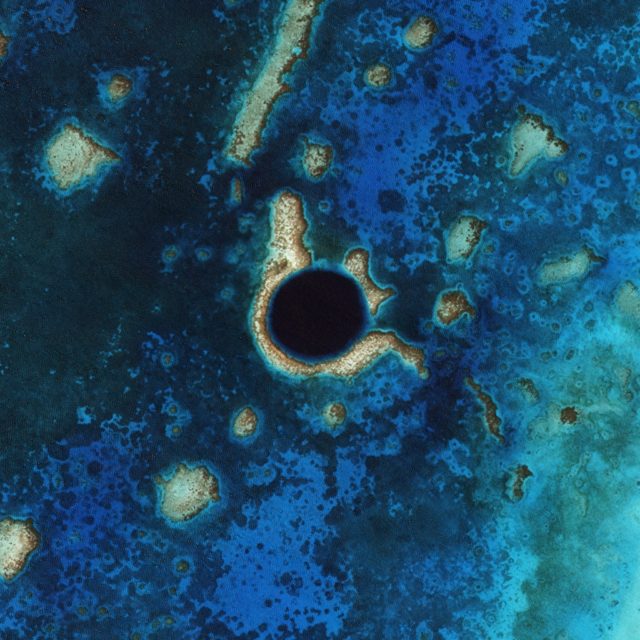
In 2018, an expedition that included Virgin billionaire Richard Branson sought to map out the Great Blue Hole. Using two submarines, the crew captured their expedition on camera, broadcasting it on the Discovery Channel. Following their descent, the crew successfully created the first-ever 3D mapping of the hole’s interior.
Chief pilot Erika Bergman, explained, “We did our complete 360 sonar map and that map is now almost complete. It looks really cool, it’s this mesh-layered, sonar scan of the entire thousand-foot diameter hole.” She continued, “It’s neat that there are spaces on our planet — and most of them in the oceans — that are exactly the way they were thousands of years ago and will remain exactly the way they are thousands of years in the future.”
Researchers were able to create the 3D map in a matter of two weeks, and the results of the map are incredible. “You can be 20 or 30 meters away from a stalactite or a hunk of the wall and see it in every perfect detail, better than eyesight could even provide.”
Not just anybody can dive the Great Blue Hole
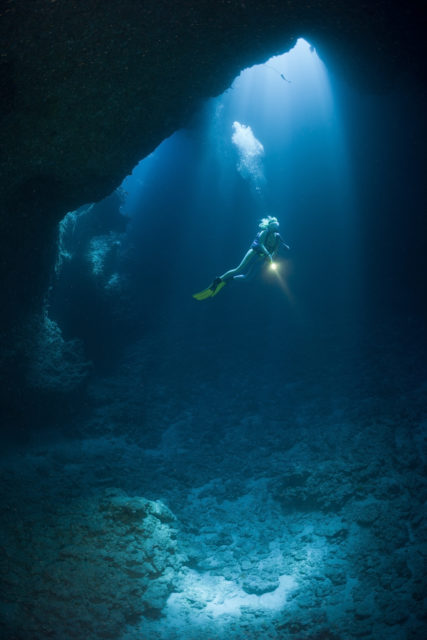
Although it’s become a hotspot for people eager to explore the wonders of the ocean, not just anyone is permitted to dive the Great Blue Hole. In fact, divers must have completed at least 24 previous dives beforehand. There are various challenges within the caverns that could be quite dangerous to recreational divers who attempt to explore it without enough experience.
Divers can experience “nitrogen narcosis” once they level off at a depth of around 130 feet. This causes them to experience drowsiness, similar to mild intoxication, due to breathing air while under pressure. It has the ability to alter their concentration and can slow their reactions and judgments in times when such things are required almost immediately.
More from us: Thor’s Well Is the ‘Gate to Hell’ on the Shore of the Pacific Ocean
Three divers have been reported missing following excursions into the Great Blue Hole, according to Bergman, while unknown numbers have lost their lives over the years. The mapping expedition carried out in 2018 found two of the three missing bodies at the bottom of the hole.
